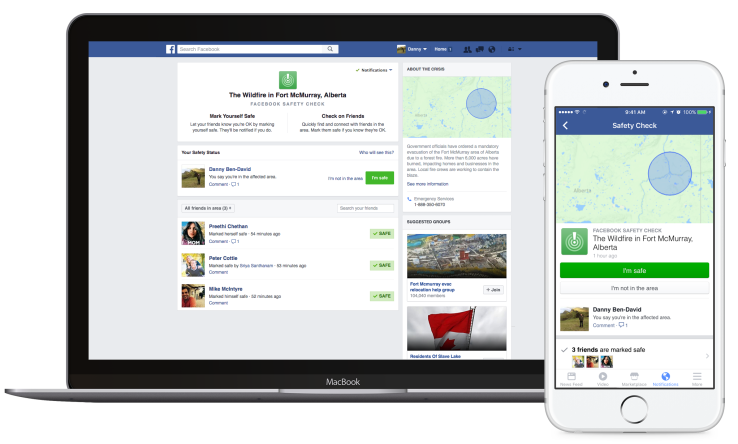

Facebook is making its Safety Check feature more stable and easier to deploy, which means that you might start seeing more Safety Checks on the platform. Before today, engineers had to type code to deploy a Safety Check. Now, there’s a simple form that any Facebook employee on the team could activate, which brings the total of people able to deploy a Safety Check from about two to a dozen throughout the world.
Safety Check is Facebook’s tool that enables you to quickly let people know that you’re okay during a crisis. The attacks in Paris were the first time Facebook deployed Safety Check for a human disaster, rather than a natural disaster, like an earthquake or tsunami. But during the bombings in Beirut, Facebook did not enable Safety Check, which resulted in some criticism. That’s when Facebook CEO Mark Zuckerberg committed to enabling Safety Check in more human disasters moving forward.
Facebook has also made it possible to launch the feature across 80 languages instantly, and added a suggested groups feature for people affected by the crisis. Those groups could be for places to stay and where to go to get resources like food and water.
In the next couple of weeks, Facebook will look to “bring the community’s voice to the table on when they want to use it and when they want to activate it,” Peter Cottle, Facebook software engineer and the creator of Safety Check, told me at a briefing at Facebook’s Menlo Park headquarters.
In these tests, Facebook’s Safety Check will be triggered by a combination of a certain number of people posting about a particular crisis plus an alert from one of Facebook’s third-party sources. Once the threshold of people posting about a crisis reaches a certain point, and is confirmed by one of the third-party sources, Facebook will ask them if they want to mark themselves safe. Those people will also be able to request the safety status of their friends.
“This is a really exciting time because not only is the community specifically themselves activating it, but also the ones promoting it and spreading it,” Katherine Woo, product lead for Facebook’s social good team, told me. “They’re the ones making the decision of ‘this is when safety check will be useful and I want to ask my friends,’ and it’s no longer Facebook sending the notification.”
The ultimate aim is to enable people in a crisis to signal whether Safety Check would be useful to them and their friends. During this test, Facebook will be looking closely to ensure that the right crises are rising and the wrong ones aren’t. This year, Facebook has activated Safety Check from the top down 17 times. In total, Facebook’s Safety Check has been deployed 28 times.
“That is a pretty big acceleration in terms of the rate of activation, but it’s based on feedback of the community, of people saying over and over again it provides so much relief and it’s really helpful for these times,” Cottle said. “I think us as a team are like, ‘Wow, this is something we should invest in and double down in, so it’s my full-time job now, which is really exciting.”

